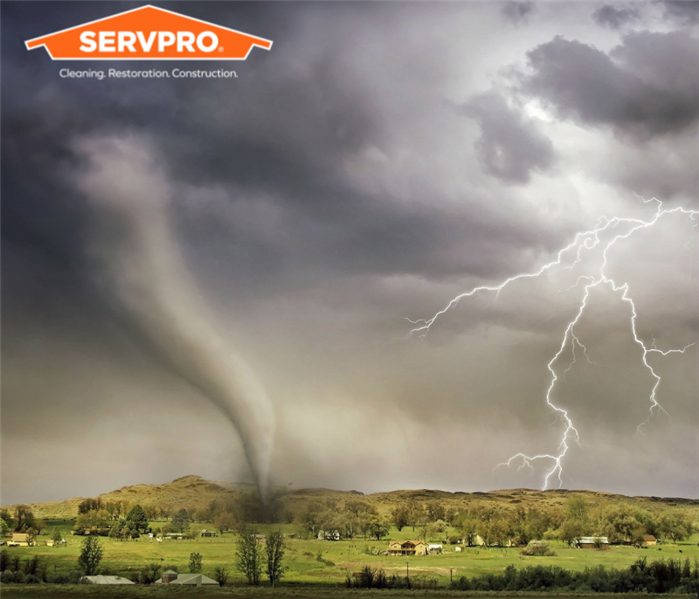Understanding the Difference Between Hurricanes and Tornadoes
5/27/2022 (Permalink)
Hurricanes and tornadoes are similar in that both form spiral shapes in warm, damp air when winds blow and collide in opposite directions. However, hurricanes develop over water (tropical oceans), while tornadoes form over land—the winds of a hurricane swirling around in a spiral at speeds up to 200mph. In the middle of the spiral is the eye, a calm center four to twenty-five miles wide, surrounded by wind and rain. A tornado is a tall, funnel-shaped spiraling whirlwind extending from the cloud base to the earth. A tornado can reach up to 2,000 feet high. In the middle is an eye of descending air, surrounded by a strong upward current that “sucks up” or “wipes out” everything in its path. The winds of a tornado can rotate up to 300 mph and move forward at 40 mph. Tornadoes can travel hundreds of miles before subsiding. Hurricanes and tropical storms can have a lifespan of days, while tornadoes are rather short-lived, typically lasting only minutes. The damage resulting from a hurricane can occur from storm surges, heavy rain, high winds, or flooding or high winds. Tornadoes primarily cause destruction as a result of high winds.
Some tornadoes form as the result of a hurricane or tropical cyclone. Tropical cyclones at landfall can provide ideal conditions for tornado formation. For example, in 1992 hurricane Andrew spawned several tornadoes throughout the South after crossing the Gulf of Mexico. Hurricane Harvey also spawned tornadoes after landfall. Though fewer tornadoes occur in tropical depressions and tropical storms, there are some exceptions.
As hurricane season is approaching, following your local news source for up-to-date information on weather situations is important. SERVPRO of Victoria is here for you! Give us a call for your storm damage needs at (361) 573-6000.



 24/7 Emergency Service
24/7 Emergency Service
